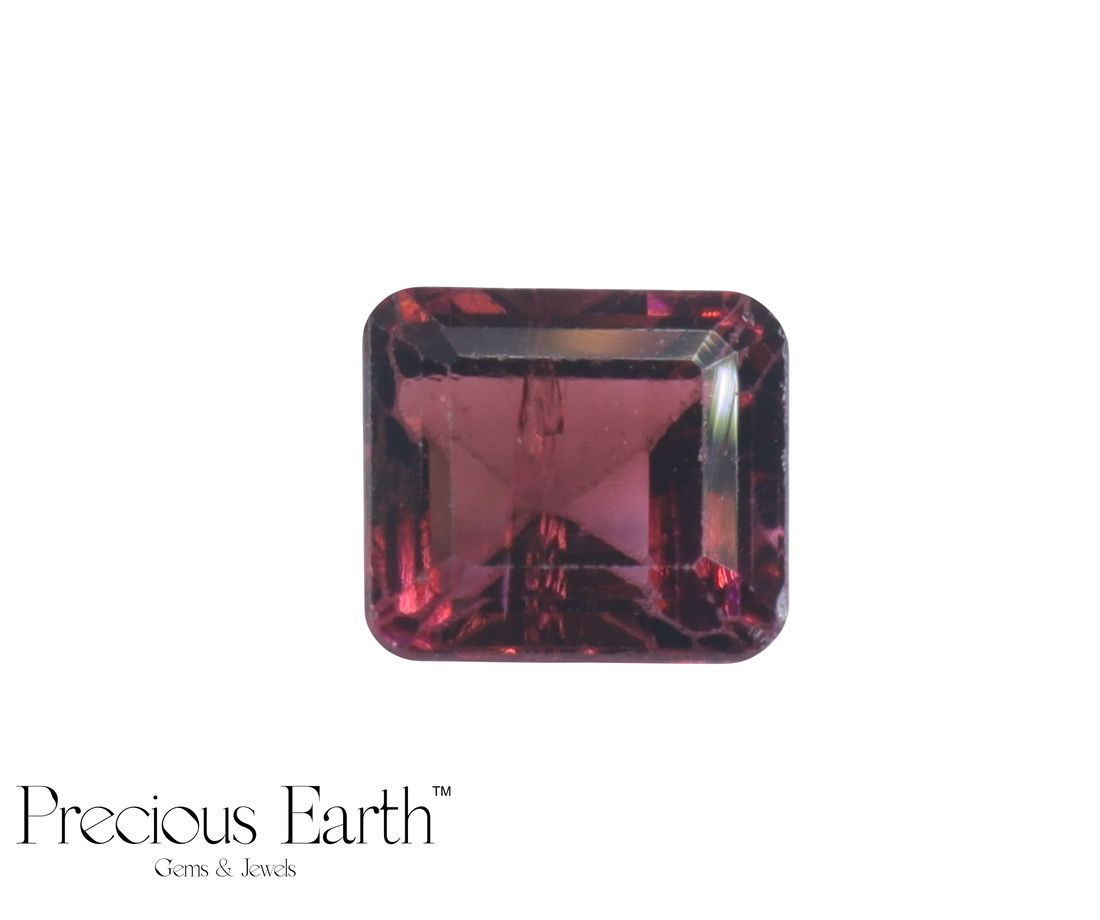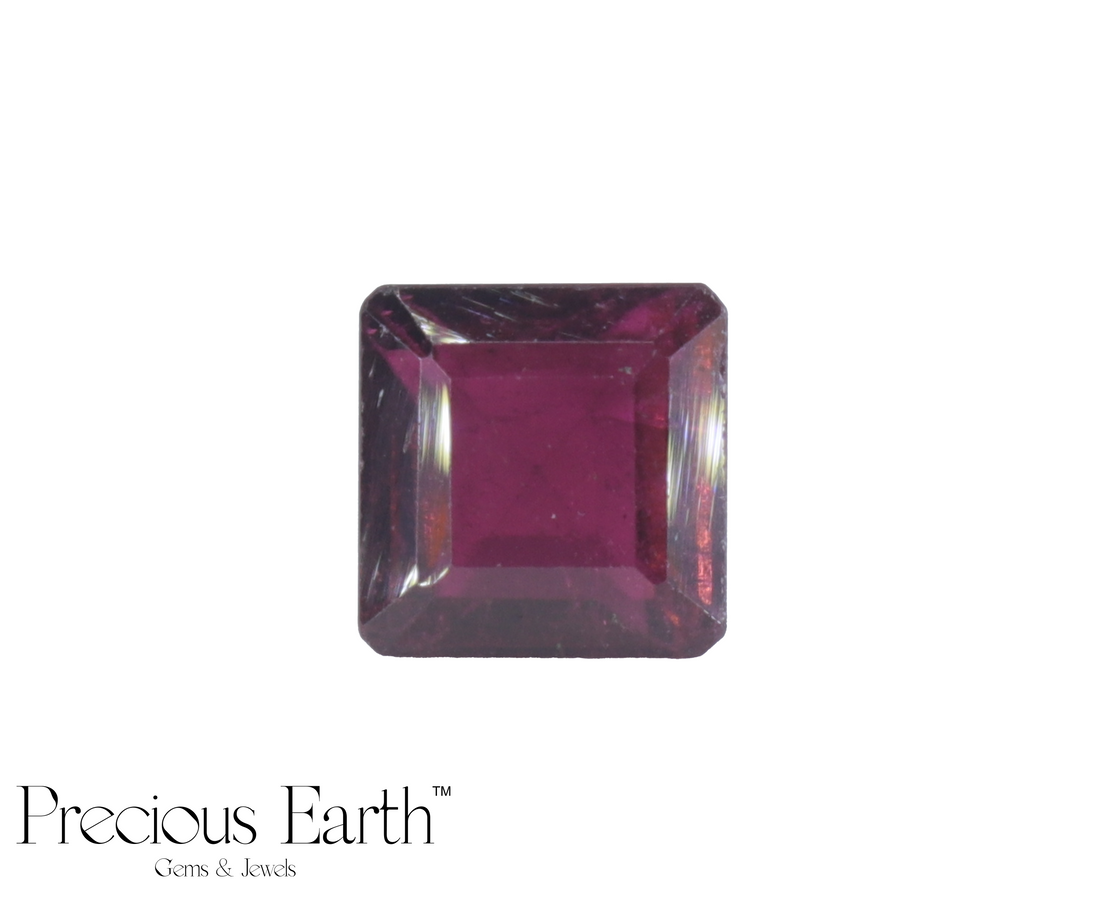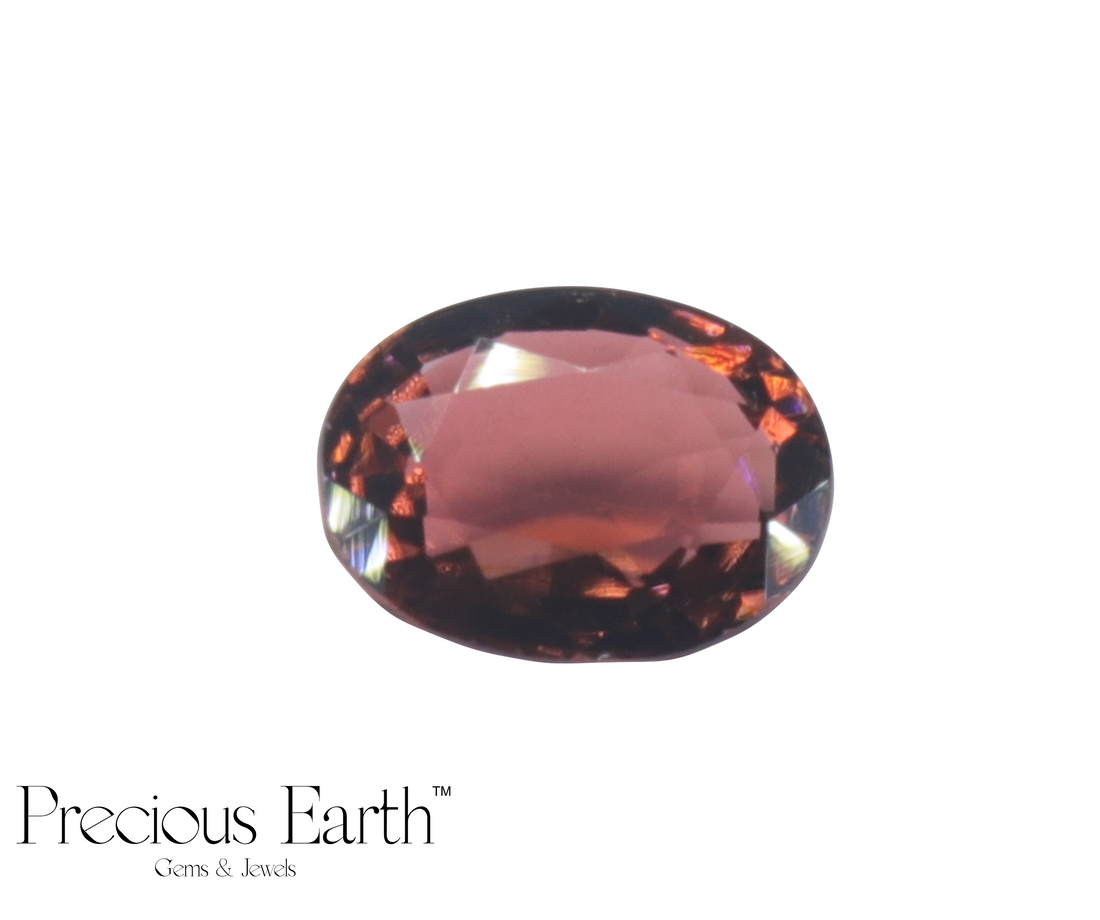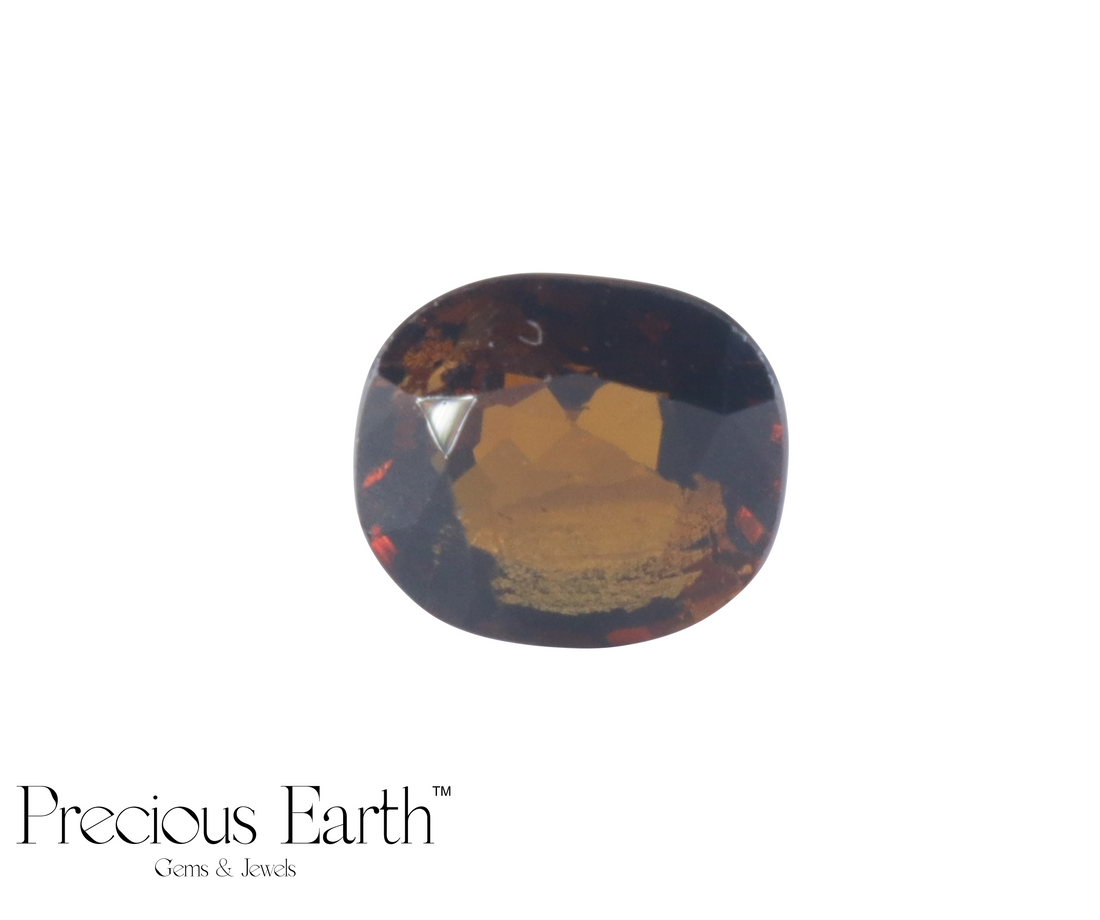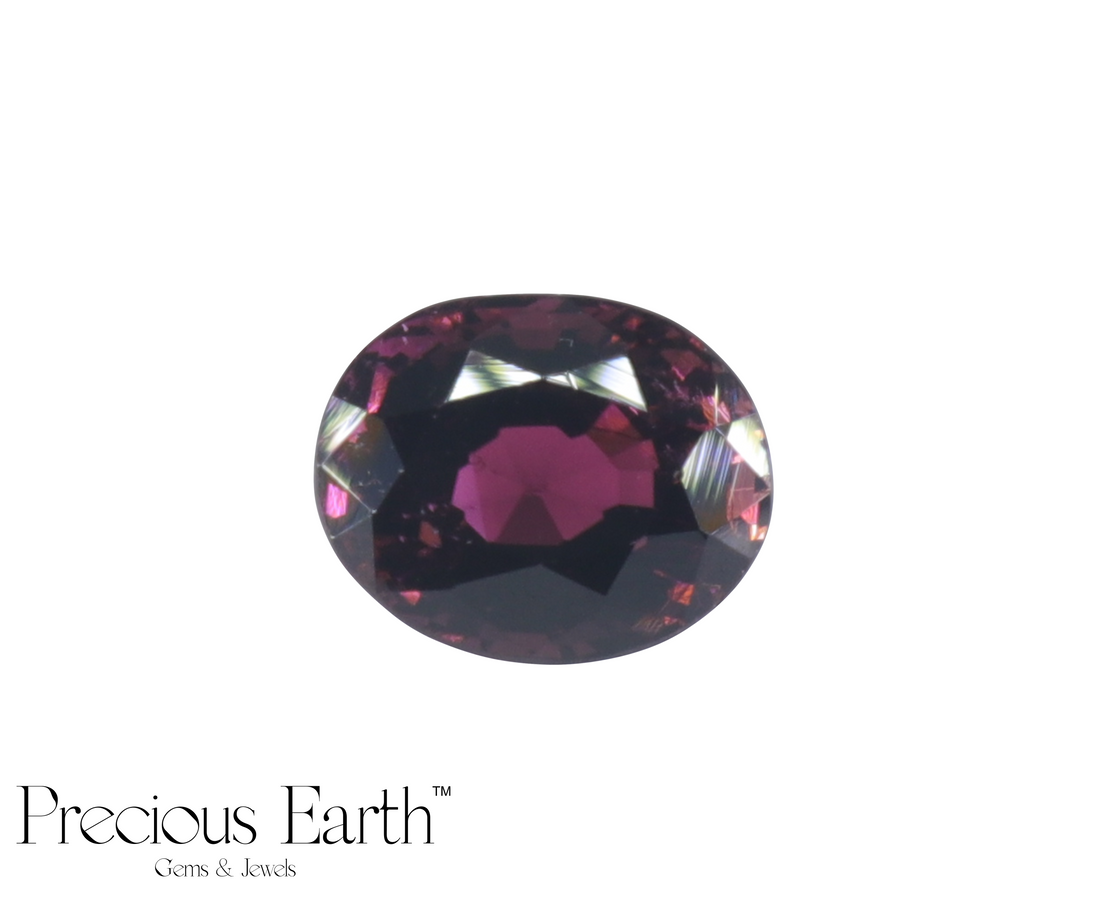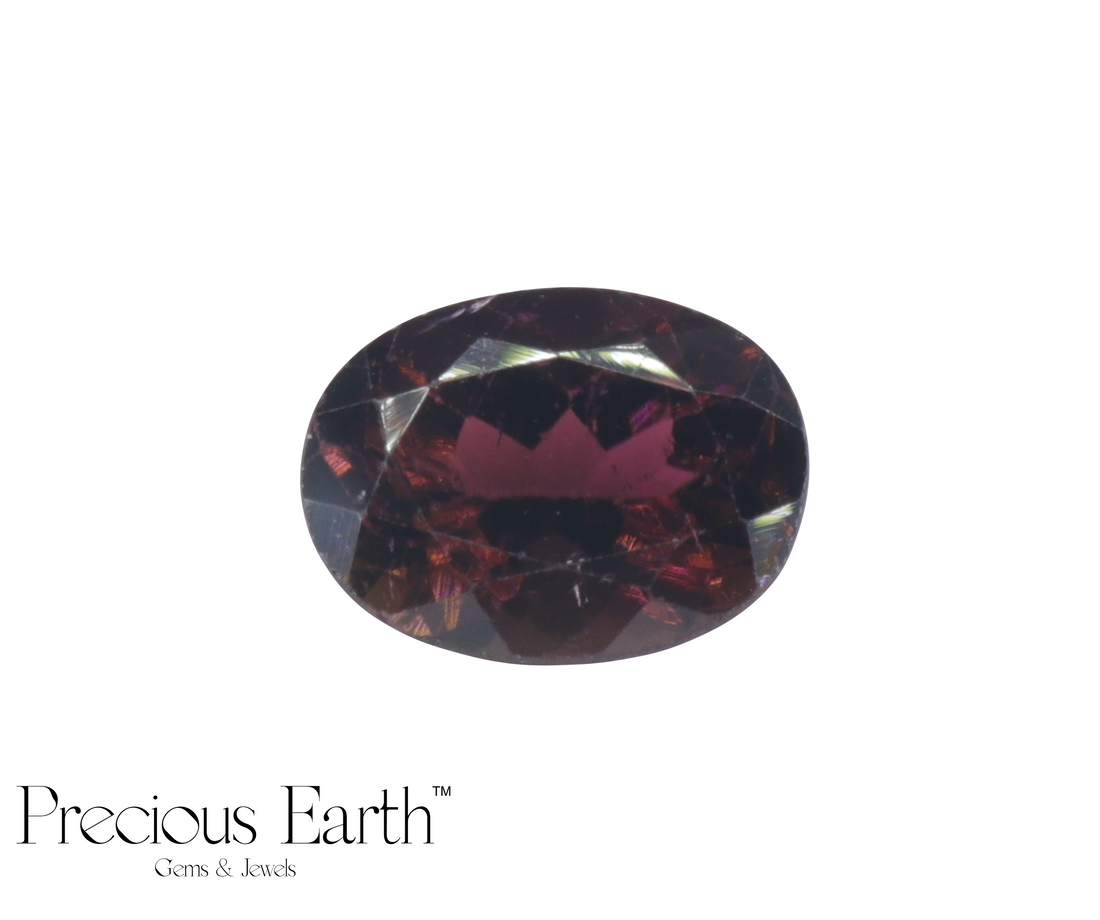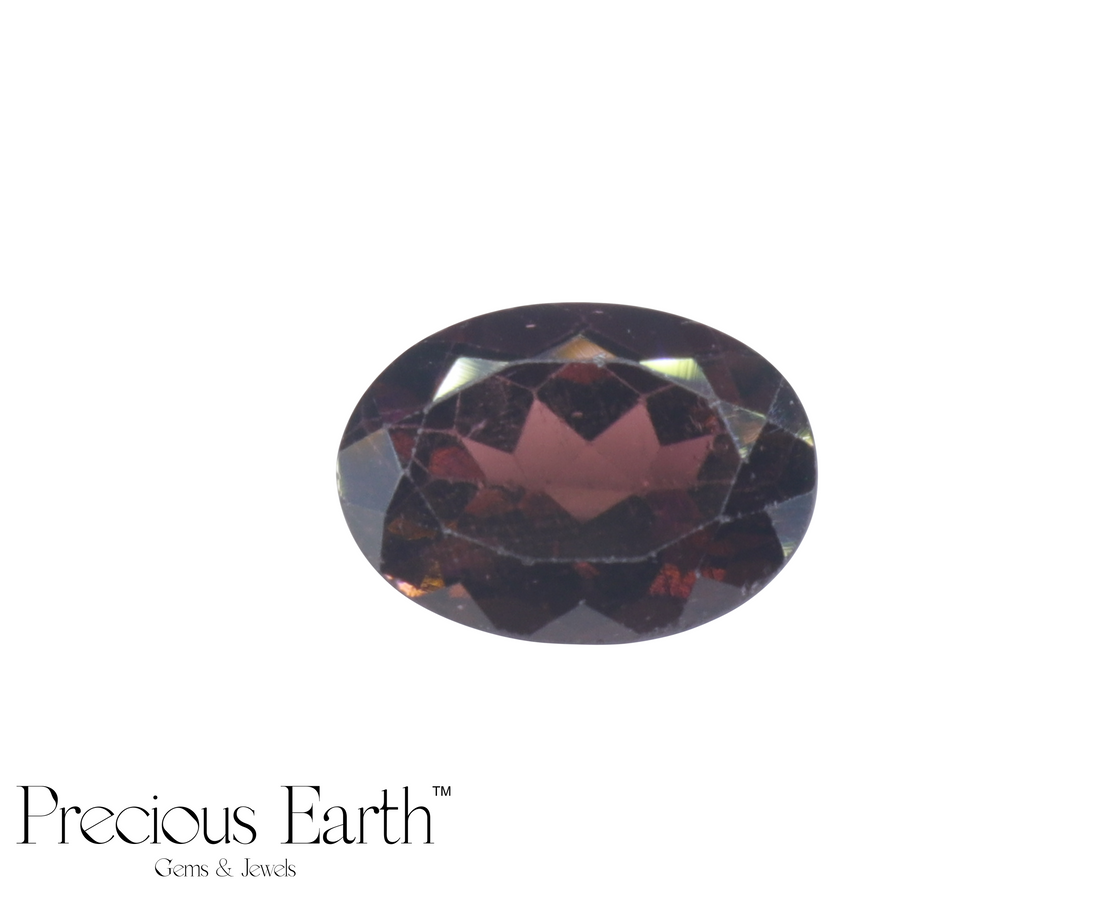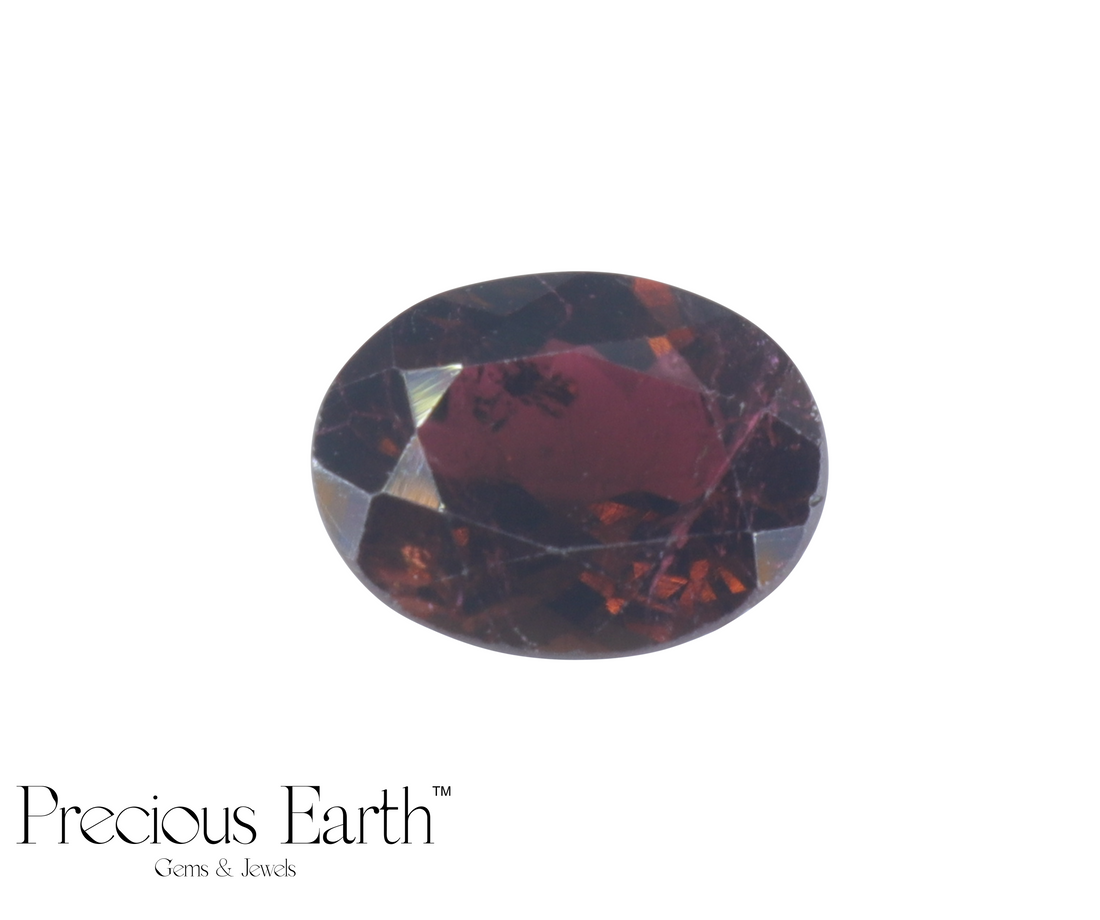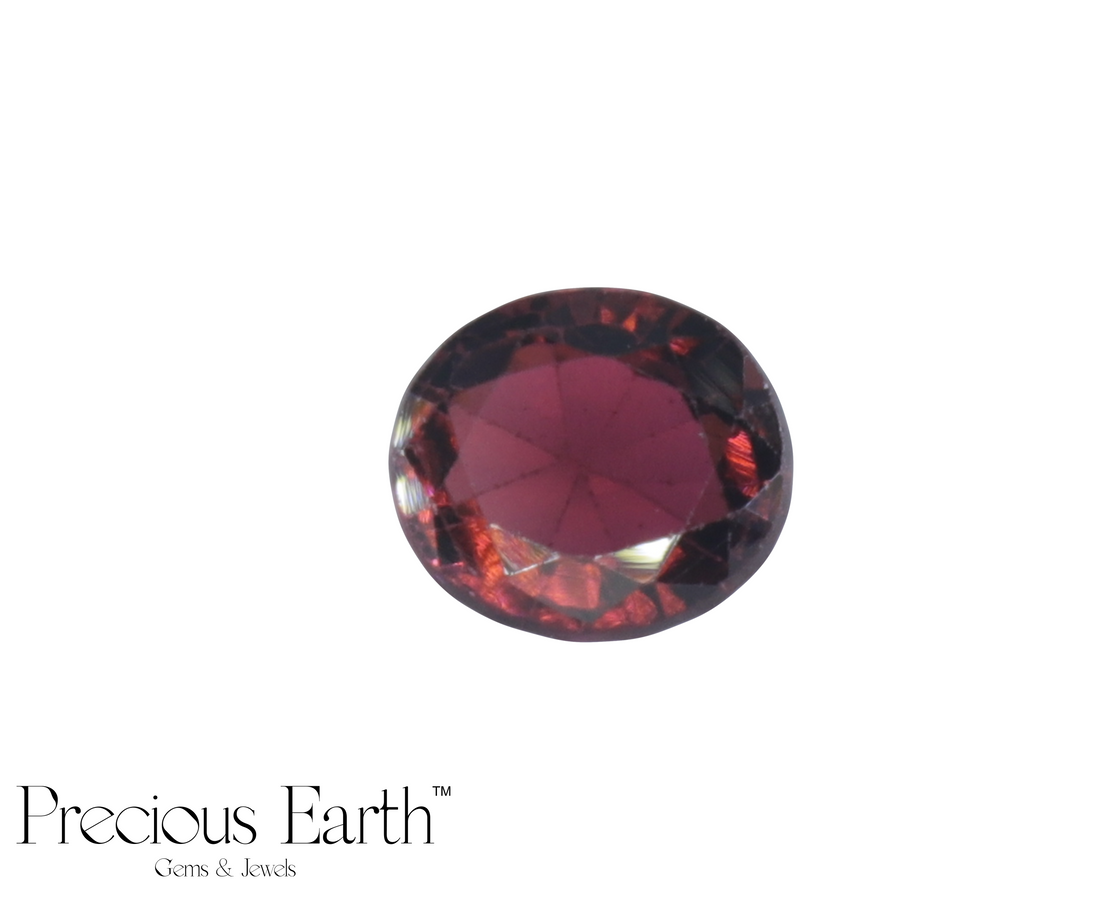This article serves as part of an ongoing series of profiles on the different varieties of precious & semi-precious gemstones. To view the entire list, click here.
Tourmalines, renowned for their captivating beauty and enchanting spectrum of colors, have enjoyed a longstanding appreciation within the realm of gemstones and jewellery, much like quartz, topaz, garnet, and sapphires. Often hailed as the "rainbow gem," tourmalines are a group of boron silicate minerals that share a common crystal structure and possess similar physical properties. However, each individual gem within the tourmaline family has a unique chemical composition of trace elements, contributing to the wide spectrum of colors for which tourmalines are known. This diverse chemical composition gives rise to a myriad of colors within the tourmaline gemstone family. From the rich, deep reds of Rubellite (red tourmaline) to the beguiling bi-colored Watermelon tourmaline and the vibrant greens of Verdelite (green tourmaline), these gems exemplify the extraordinary diversity encapsulated within their mineral family.
This article is a comprehensive guide to tourmalines, illuminating their origins, occurrences, and the critical factors that define their quality. With this guide, we furnish readers with a meticulously researched and factually accurate exploration of these truly exquisite gemstones. Keep reading to understand everything you need to know about tourmaline gemstones.
1. Tourmalines - Formation & Occurrence
Tourmalines, born from geological forces, emerge as silicate minerals with complex boron and aluminium crystals. Formed in granite and pegmatite deposits with abundant boron, lithium, and iron, their journey involves intricate geological processes, contributing to their enchanting allure. A crystalline silicate mineral group, tourmaline crystals feature a six-member ring cyclosilicate structure and a trigonal crystal system.
 Rough Tourmaline Minerals
Rough Tourmaline Minerals
2. Where Are Tourmalines Found?
Tourmalines, much like sapphires and topaz with their stunning array of colors, are found across the globe – with each region contributing distinct characteristics to these captivating gemstones. Some notable sources of tourmalines include:
- Ceylon/Sri Lanka: The island of gems, Sri Lanka has a rich history of tourmaline mining. These tourmalines are known for their exceptional color purity, displaying a wide range of vibrant hues. Among the spectrum of colors found here, vibrant greens, mesmerizing pinks, and other captivating shades contribute to the island's gemstone legacy.
- Brazil: Brazil is a significant source of tourmalines, offering a variety of colors and types. Brazilian tourmalines are celebrated for their diversity, including vibrant greens and other captivating shades.
- Afghanistan: Afghanistan is another notable contributor to the global tourmaline market. Whether it's the depth of reds or the allure of other hues like pink and green, Afghan tourmalines hold a distinct place in the gemstone spectrum.
- United States: The United States, particularly states like California and Maine, is home to large tourmaline deposits. American tourmalines exhibit a range of colors from raspberry pinks to minty greens, further enriching the global availability of these gems.
Other sources of tourmaline include Tanzania, Nigeria, Kenya, Madagascar, Mozambique, and Namibia.
3. The Colour Span of Tourmalines
One of the most enchanting aspects of tourmalines is their remarkable range of colours. From the vivid pinks and reds of Rubellite to the tranquil blues of Indicolite (blue tourmaline), and the captivating Watermelon tourmaline, these gems cover nearly every hue in the spectrum, much like sapphires. Some of the most notable colours of tourmalines are:
- Black Tourmaline (Schorl): Schorl is the black variety of tourmaline, colored black by the presence of iron. Schorl is exclusively black and, unlike other tourmaline forms, is almost always opaque. It is the most common form of tourmaline and is found in various locations around the world.
- Watermelon Tourmaline: A distinctive addition to the tourmaline gemstone family, natural Watermelon Tourmaline stone showcases a captivating blend of green and pink colors, separated by a minor white area. Often referred to as Bi-color or Tri-color Tourmaline in gem certificates, this gemstone's loose form is remarkably beautiful when used in customized jewelry.
 A Rough Watermelon Tourmaline (Source: GIA)
A Rough Watermelon Tourmaline (Source: GIA)
- Paraiba Tourmaline: This sought-after and rare color Tourmaline variety, also known as Cuprian Elbaite, features a unique neon blue to blue-green color with an incredible glow, owing to its copper content. Paraiba tourmaline is considered to be the rarest type of tourmaline in gemmology.
 Jewelry with Paraiba Tourmalines
Jewelry with Paraiba Tourmalines
- Green Tourmaline (Verdelite): Green Tourmaline, also known as Verdelite, is a variety of tourmaline gemstone characterized by its green color, which ranges from light green to vivid emerald green. These are often used as alternatives to emeralds.
- Red Tourmaline (Rubellite): Recognized for its deep reddish-pink to pinkish-purple hue, Rubellite is a highly valuable and an exceedingly rare gem variety of Tourmaline. The mesmerizing purplish-red color sets this gemstone apart, and is often used as a substitute for rubies in jewellery.
- Blue Tourmaline (Indicolite): A rare and beautiful variety of tourmaline, natural Blue Tourmaline or Indicolite is valued for its vibrant blue color and is used as an alternative to blue sapphires.
- Brown Tourmaline (Dravite): Dravite is typically a brown color tourmaline, ranging from light to dark brown, and it is often found in metamorphic rocks and hydrothermal veins. Dravite is also known for its high magnesium content, which gives it a distinctive brown color.
4. Common Inclusions in a Tourmaline
Tourmalines, despite their captivating beauty, showcase nature's unique imprints through subtle inclusions. These natural fingerprints tell a story of the gemstone's formation. Some common inclusions in a tourmaline include:
- Mineral Crystals: Tourmalines often encapsulate tiny mineral crystals within their matrix, showcasing the geological environment of their formation. Some of the minerals that can be encapsulated within tourmaline include quartz, microcline, albite, lepidolite, beryl, and bauxite.
- Needle-Like Structures: Delicate needle-like structures traverse tourmalines, adding an intricate pattern reminiscent of fine threads. Needle-like structures in tourmalines can include a variety of minerals, such as elongated crystals of minerals like rutile, actinolite, or other elongated mineral inclusions. The exact nature of these structures depends on the specific geological conditions during the formation of the tourmaline.
- Liquid Inclusions: Some tourmalines contain tiny liquid pockets within their crystal lattice, including water, hydrocarbons, or other liquid substances. The presence of these liquids creates mesmerizing visual effects like subtle color shifts.
- Growth Tubes: Elongated voids or channels, known as growth tubes, bear witness to the dynamic conditions during the gem's formation.
- Cleavage & Fractures: Cleavage and fractures, results of formation stresses, contribute to the gem's distinctive appearance.
 Growth tubes in a Green Tourmaline (Verdelite)
Growth tubes in a Green Tourmaline (Verdelite)
Identifying and understanding these inclusions is pivotal when evaluating the overall quality and value of a tourmaline.
5. Common Treatments & Enhancements of Tourmalines
To enhance their visual appeal in jewelry, tourmalines may undergo various treatments and enhancements. Heat treatments and irradiation processes are the most common enhancements done to tourmalines.
- Heat Treatment/Thermal Enhancement: Heating Involves subjecting tourmalines to controlled high temperatures. This process aims to alter or enhance the gem's color and clarity, often intensifying existing hues or even introducing new ones. This process can transform a gem with subtle tones into a vibrant, visually striking tourmaline.
- Irradiation: This exposes tourmaline to ionizing radiation, a method employed to induce color changes or enhance existing hues. This controlled treatment affects the crystal lattice and, consequently, the gem's color.
When acquiring tourmaline jewelry, consider opting for gems that come with disclosure about any treatments or enhancements. Reputable jewelers provide this information, allowing consumers to make choices aligned with their preferences and ethical considerations.
| Mineral | Boron Silicate |
|---|---|
| Colour Span | Wide range of colors including green, neon blue, dark blue, deep pink, purple, red, & every color in between |
| Popular Origins | Brazil, Mozambique, Afghanistan, Madagascar, Pakistan, Sri Lanka, and the United States (California & Maine) |
| Mohs Hardness | 7.00 - 7.50 (on a scale of 10) |
| Common Treatments | Thermal enhancement (heat treatment), Irradiation |
| Birthstone | October |
Tourmalines - A Quick Snapshot
6. Evaluating the Quality of a Tourmaline
When assessing the quality of tourmalines, the 4Cs – Color, Clarity, Cut, and Carat weight as well as origin – play pivotal roles in determining their overall value.
- Color: Color is paramount in evaluating a tourmaline's worth. The intensity, hue, and saturation contribute to its beauty. Rubellite's deep reds, pink tourmaline's delicate blush, and the lush greens of green tourmaline all showcase the breath-taking spectrum of colors within this gemstone family. It's crucial to note that certain colors are significantly more valuable than others; for instance, Paraiba tourmaline, with its neon-blue variety, is much more expensive than black tourmalines due to its rarity.
- Clarity: Inclusions impact a tourmaline's clarity; acceptable in moderation, excessive flaws diminish its quality. Green tourmalines, for example, are considered Type I clarity - which means they are expected to be transparent and free from eye-visible flaws, while other colors like blue, orange, red, purple, etc. fall under Type II, and in contrast, Rubellites belong to Type III as they have relatively more internal imperfections.
- Cut: A skilled cut can enhance a tourmaline's brilliance and overall visual appeal. Tourmaline can be cut into faceted cuts such as oval, round, pear, emerald, and others, to enhance its brilliance and color intensity. Cabochon cuts, which feature a smooth, polished, and domed surface, are often used to showcase interesting tourmaline inclusions resulting in the Cat’s Eye Tourmaline. The cut also influences the way light interacts with the stone, showcasing its unique colors and brilliance.
- Carat Weight: Carat weight plays a crucial role in rarity and value. Larger stones, especially with exceptional color and clarity, are more valuable, though smaller, well-cut tourmalines can also be highly desirable.
- Origin: The origin significantly influences a tourmaline's value. Gems from historically significant locations like Sri Lanka or Brazil are prized for their unique qualities. Active sources worldwide include Brazil, Africa, Madagascar, Afghanistan, and more.
7. How Much Do Tourmalines Cost?
Tourmaline prices hinge on key factors like color, clarity, cut, and carat weight. The classification of tourmalines primarily hinges on their color, significantly influencing their pricing. For instance, the neon-blue variety, Paraiba, commands exceptionally high prices, while gemstones with colors like brown may not be as expensive. High-quality stones with vibrant colors, minimal inclusions, and excellent cuts command premium prices. Larger stones incur higher per-carat costs.
Gray and Black Tourmaline range from $10 to $25 per carat, Red Tourmaline or Rubellite from $200 to thousands of dollars per carat, and Blue Tourmaline or Indicolite from $25 to $2000 per carat. Paraiba tourmalines, which are considered among the rarest variety, may start at $100 per carat for lower qualities, and upto tens of thousands of dollars per carat for higher qualities.
Whether for jewelry or astrological purposes, buying Tourmaline online ensures competitive prices and a range of options to suit your preferences and budget.
8. Tourmalines in Astrology
Beyond their aesthetic appeal, tourmalines have a profound place in astrology, offering varied metaphysical properties for seekers of beauty and spiritual connection. As a birthstone for October, tourmaline serves as the zodiac gemstone for Libra in Vedic astrology, representing planets Saturn and Mercury.
The diverse color varieties symbolize different properties, stimulating vital chakras. Black tourmaline or schorl, for example, is often used for protection against negativity and is said to create a relaxed yet safe environment. Tourmalines, in general, are believed to have a potent detoxifying effect, expelling toxins and promoting positivity for overall well-being. Recommended for sleep disorders, this gemstone aids in emotional healing, concentration, and restful sleep. Wearing tourmaline is linked to enhanced athletic performance, quick recovery, reduced stress, and a healthy libido in men. Whether adorning jewelry or serving as birthstones, these tourmaline gemstones continue to captivate and inspire generations of gem enthusiasts.


